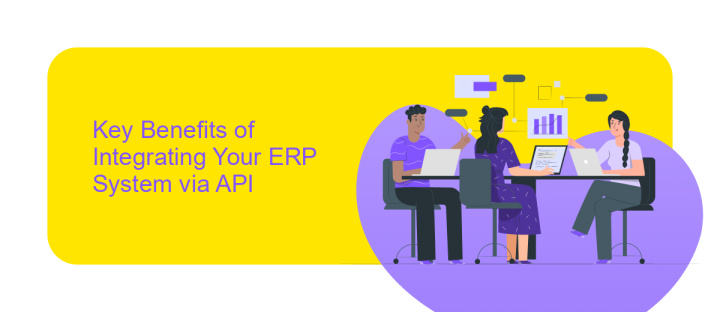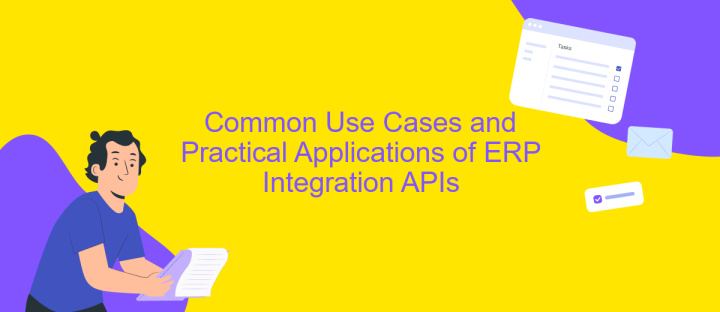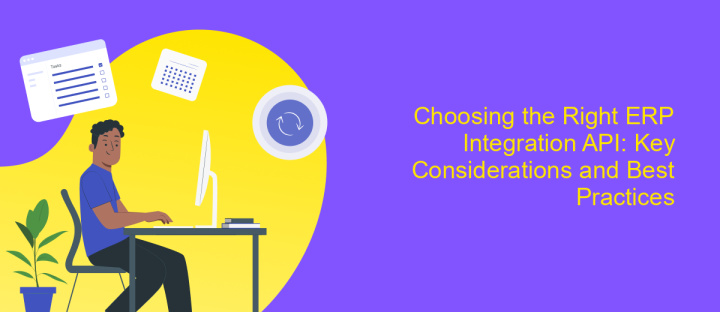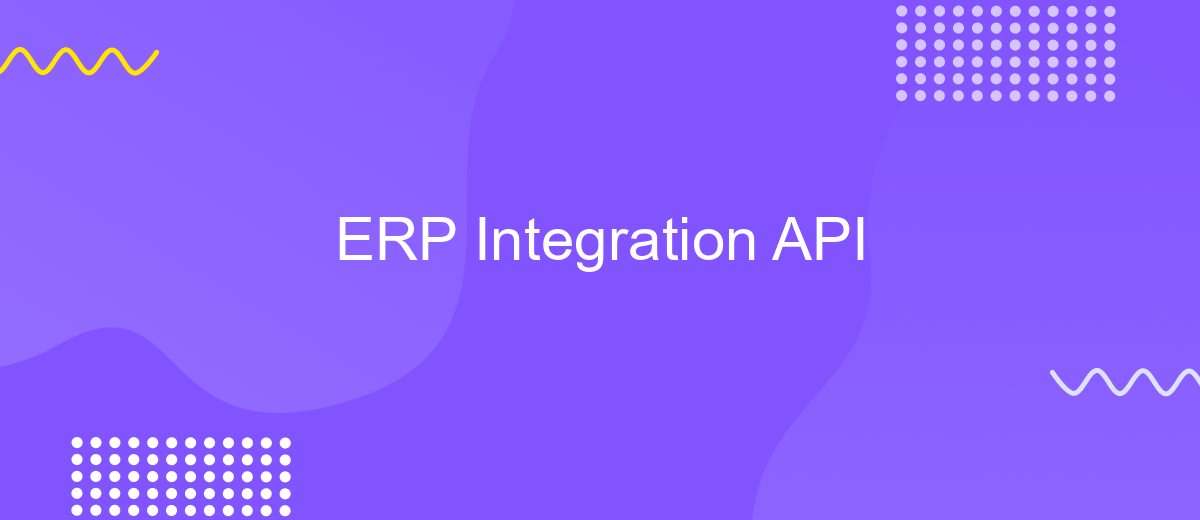ERP Integration API
In today's fast-paced business environment, seamless integration of Enterprise Resource Planning (ERP) systems is crucial for operational efficiency and data accuracy. An ERP Integration API acts as a vital bridge, enabling disparate systems to communicate and share information effortlessly. This article explores the significance of ERP Integration APIs, highlighting their role in streamlining processes, enhancing decision-making, and providing a unified view of organizational data.
Understanding ERP Integration APIs: A Comprehensive Overview
Enterprise Resource Planning (ERP) Integration APIs are essential tools that enable seamless communication between different software systems within an organization. These APIs facilitate the exchange of data between ERP systems and other applications, ensuring that information flows smoothly and efficiently. By using integration APIs, businesses can streamline processes, reduce manual data entry, and improve overall productivity.
- Data Synchronization: Ensures consistent data across all platforms.
- Process Automation: Reduces manual tasks by automating workflows.
- Scalability: Easily adapts to growing business needs.
- Real-time Access: Provides up-to-date information for decision-making.
- Cost Efficiency: Minimizes the need for custom development.
Understanding the capabilities and benefits of ERP Integration APIs is crucial for businesses aiming to enhance their operational efficiency. These APIs not only bridge the gap between disparate systems but also offer a flexible and scalable solution for evolving business demands. As companies continue to embrace digital transformation, leveraging ERP Integration APIs becomes increasingly vital to maintain a competitive edge in the market.
Key Benefits of Integrating Your ERP System via API

Integrating your ERP system via API offers numerous advantages that can significantly enhance your business operations. One of the key benefits is the seamless connectivity it provides between various business applications, enabling real-time data exchange and improved communication across departments. This integration eliminates data silos, ensuring that all stakeholders have access to up-to-date information, which leads to more informed decision-making and increased operational efficiency. Moreover, API integration allows for greater flexibility and scalability, as it can easily adapt to the evolving needs of your business without requiring extensive changes to your existing infrastructure.
Another significant advantage is the ability to automate routine processes, reducing manual effort and minimizing errors. With services like ApiX-Drive, businesses can set up and manage integrations effortlessly, ensuring a smooth and efficient workflow. ApiX-Drive simplifies the process of connecting your ERP system with other applications, providing a user-friendly interface that doesn't require extensive technical knowledge. This not only saves time and resources but also allows your team to focus on more strategic tasks, ultimately driving productivity and growth. By leveraging API integration, businesses can achieve a more cohesive and agile operational environment.
Common Use Cases and Practical Applications of ERP Integration APIs

ERP Integration APIs have become essential tools for businesses aiming to streamline operations and enhance data connectivity across various platforms. These APIs facilitate seamless communication between ERP systems and other software, enabling organizations to optimize workflows and improve decision-making processes. By leveraging ERP Integration APIs, companies can ensure real-time data synchronization, reduce manual data entry errors, and enhance overall productivity.
1. Automated Data Transfer: ERP Integration APIs enable automated data exchange between ERP systems and other applications, such as CRM or e-commerce platforms, ensuring accurate and up-to-date information across all channels.
2. Business Intelligence: By integrating ERP systems with analytics tools, businesses can gain valuable insights from their data, helping them make informed strategic decisions.
3. Supply Chain Management: APIs facilitate real-time tracking and management of inventory and logistics, improving supply chain efficiency and reducing operational costs.
Incorporating ERP Integration APIs into business processes not only enhances operational efficiency but also provides a competitive edge in the market. These APIs empower organizations to adapt quickly to changing business environments by enabling flexible and scalable integration solutions. As a result, businesses can focus on core activities while ensuring seamless data flow across all systems.
Choosing the Right ERP Integration API: Key Considerations and Best Practices

When selecting an ERP Integration API, it's crucial to evaluate its compatibility with existing systems. A seamless integration ensures that data flows smoothly between platforms, minimizing disruptions to business operations. Consider the API's scalability to accommodate future growth and changes in business needs.
Security is another critical factor. Ensure that the API adheres to industry standards for data protection and encryption. This is essential to safeguard sensitive information and maintain compliance with regulations.
- Check for comprehensive documentation and support resources.
- Evaluate the API's performance and reliability through user reviews.
- Consider the total cost of ownership, including licensing and maintenance fees.
- Look for APIs that offer flexibility in customization and integration options.
Finally, engage with vendors to understand their roadmap for future updates and improvements. This can provide insights into the longevity and adaptability of the API, ensuring that it continues to meet your organization's evolving requirements. Making an informed choice can greatly enhance operational efficiency and drive business success.
Future Trends and the Evolving Landscape of ERP Integration APIs
As the digital landscape continues to evolve, ERP integration APIs are becoming increasingly sophisticated, driven by the need for seamless connectivity and real-time data exchange. Future trends indicate a shift towards more intelligent and adaptive APIs that leverage artificial intelligence and machine learning to predict and respond to business needs proactively. This evolution is set to enhance decision-making processes by providing more accurate and timely insights, thereby optimizing operational efficiency. Additionally, the demand for cloud-based ERP solutions is on the rise, prompting APIs to become more versatile and scalable to accommodate diverse business environments.
In this evolving scenario, integration platforms like ApiX-Drive are playing a pivotal role. By offering user-friendly interfaces and robust automation capabilities, these platforms simplify the integration process, enabling businesses to connect their ERP systems with various applications effortlessly. ApiX-Drive, for instance, allows users to automate workflows without the need for extensive coding knowledge, thus democratizing access to sophisticated integration solutions. As businesses strive to remain competitive, leveraging such platforms will be crucial in navigating the complexities of ERP integration in the future.
FAQ
What is an ERP Integration API?
How does an ERP Integration API work?
What are the benefits of using an ERP Integration API?
What challenges might I encounter when integrating with an ERP API?
Can I integrate my existing applications with an ERP system without extensive coding?
Apix-Drive is a universal tool that will quickly streamline any workflow, freeing you from routine and possible financial losses. Try ApiX-Drive in action and see how useful it is for you personally. In the meantime, when you are setting up connections between systems, think about where you are investing your free time, because now you will have much more of it.

